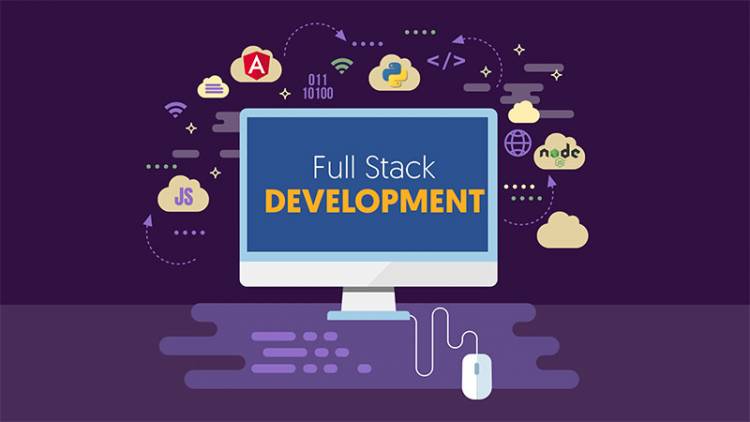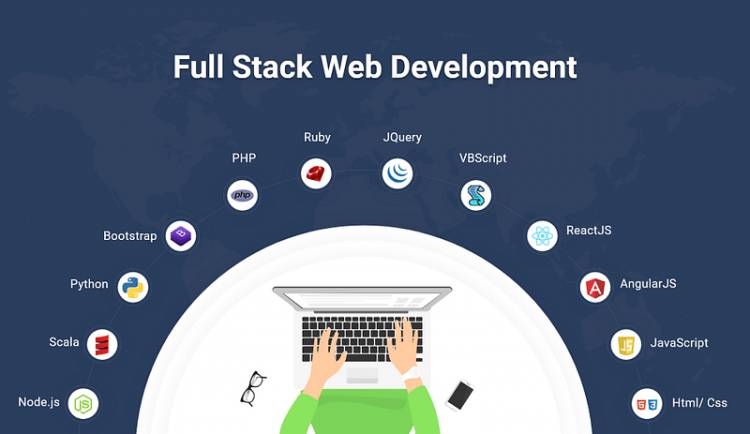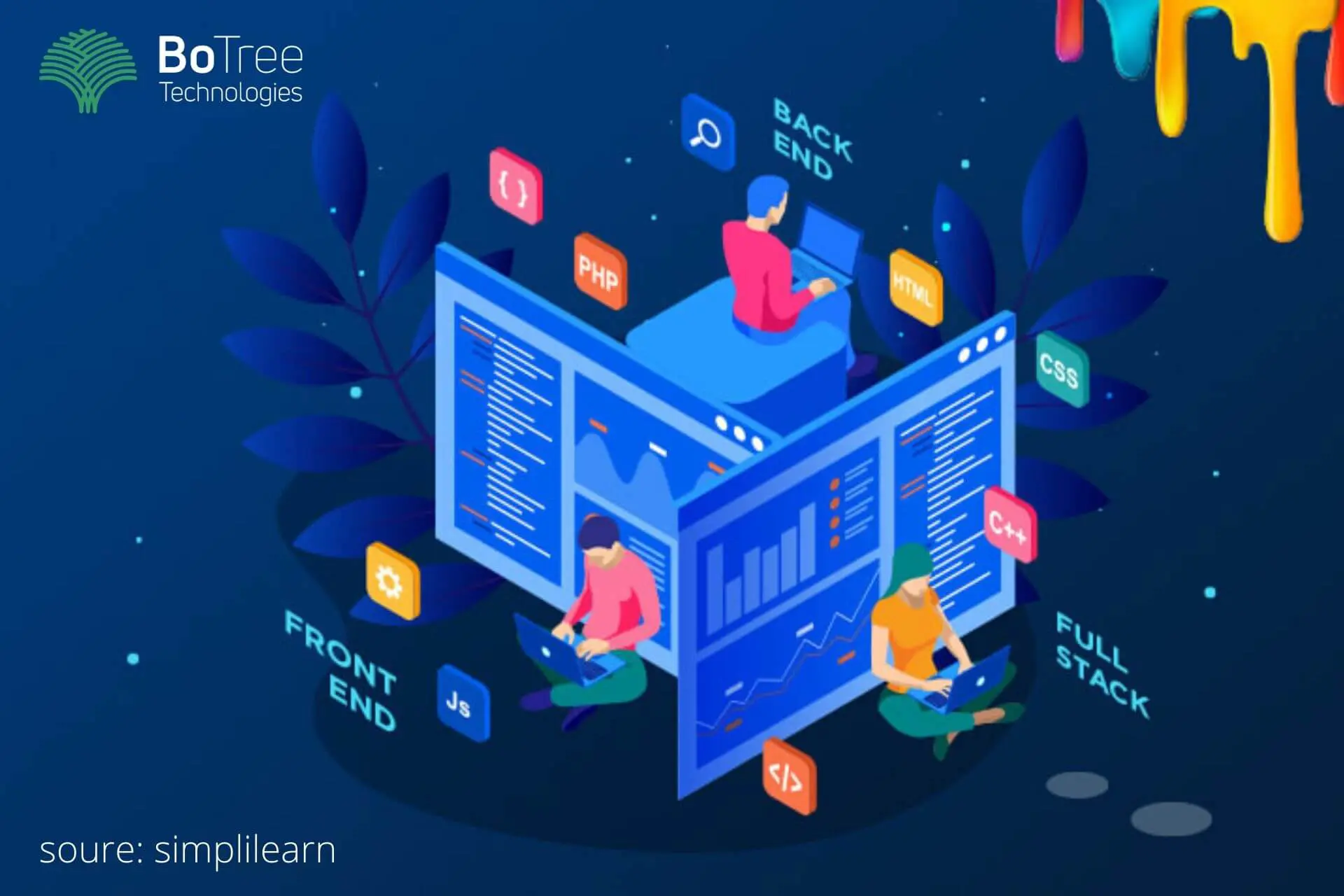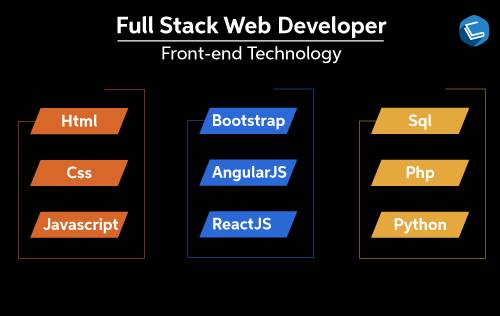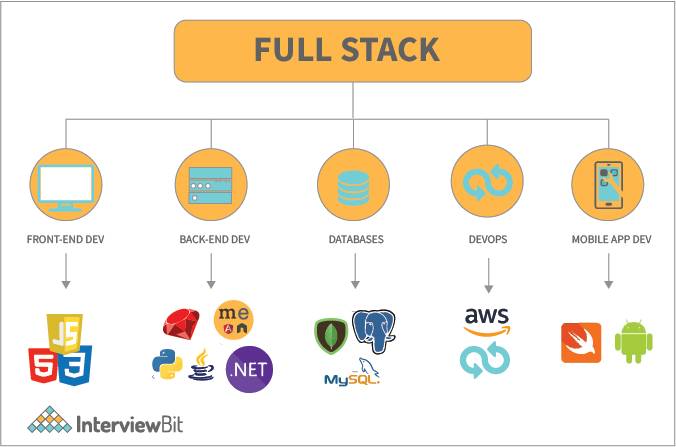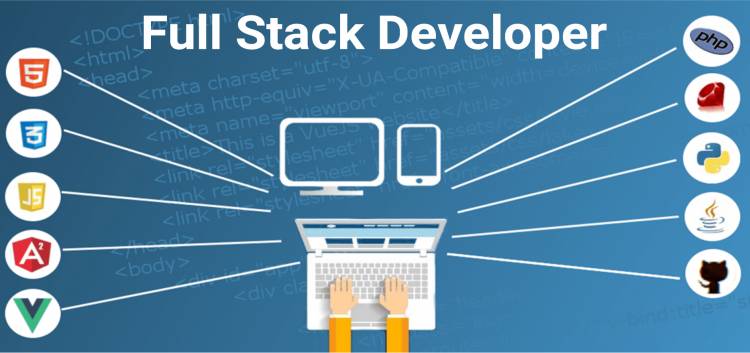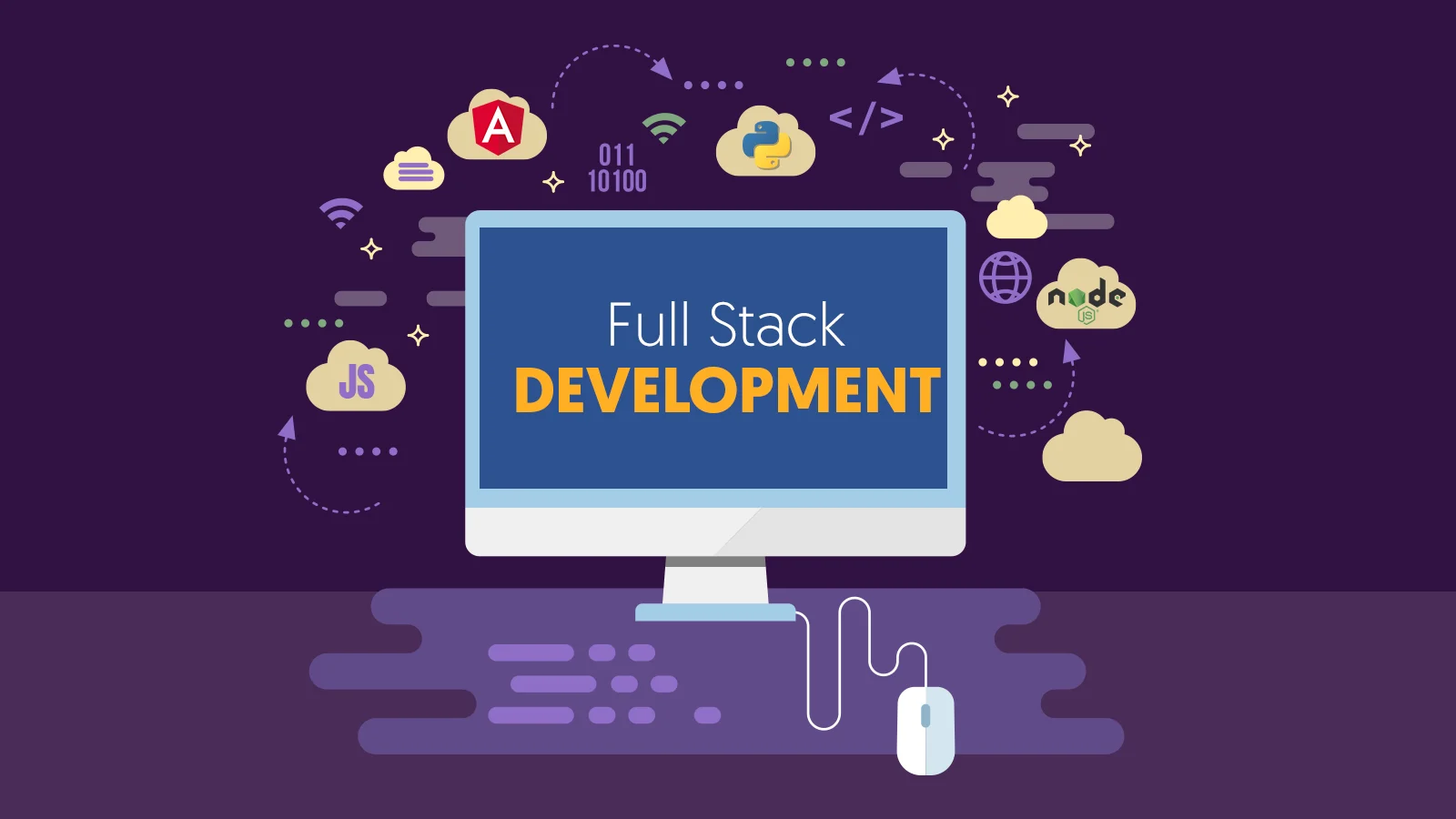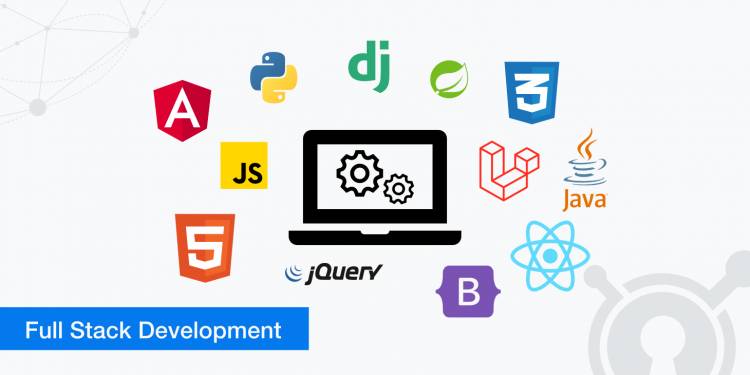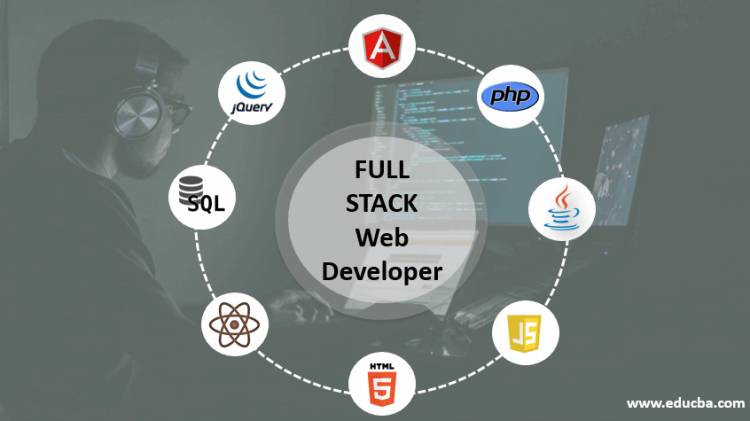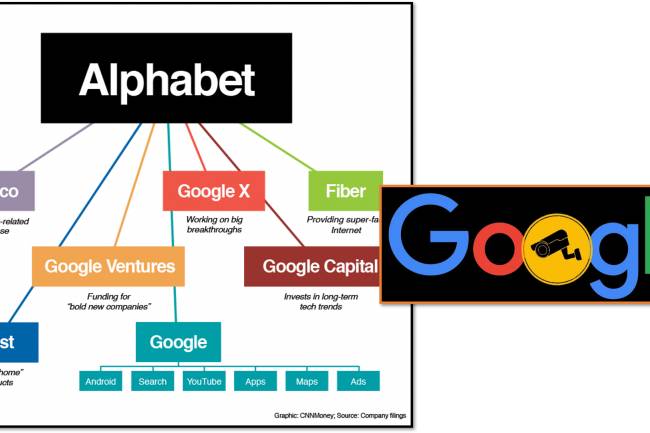Full-stack development web based
Full-stack development
Full-stack development is a software development approach in which a single developer works on both the front-end and back-end of a web application. This means that the developer is responsible for both the user interface (UI) and the underlying logic of the application.
Full-stack developers typically have a strong understanding of HTML, CSS, Bootstrap, and JavaScript for the front end, as well as back-end languages like Python, Java, or PHP. They also have a good understanding of databases and web servers.
Full-stack developers are in high demand, as they can save businesses time and money by developing and maintaining their own applications. They are also well-positioned to take on new challenges and responsibilities as the technology landscape continues to evolve.
Benefits of full-stack development:
- Cost savings: Full-stack developers can save businesses time and money by developing and maintaining their own applications.
- Agility: Full-stack developers can quickly and easily make changes to applications, which can help businesses stay ahead of the competition.
- Scalability: Full-stack developers can design applications that are scalable, so they can easily be adapted to meet the needs of a growing business.
- Flexibility: Full-stack developers can work on a variety of projects, which can help them stay up-to-date on the latest technologies.
If you are interested in becoming a full-stack developer, there are a few things you can do to prepare:
- Learn the basics of front-end and back-end development: This includes HTML, CSS, JavaScript, Python, Java, PHP, databases, and web servers.
- Build a portfolio of projects: This will help you showcase your skills to potential employers.
- Network with other developers: This will help you stay up-to-date on the latest technologies and find job opportunities.
- Become a lifelong learner: The tech industry is constantly evolving, so it is important to be willing to learn new things.
The requirements for full-stack development
The requirements for full-stack development vary depending on the specific role and responsibilities, but some common requirements include:
- Strong understanding of front-end development: This includes HTML, CSS, Bootstrap, and JavaScript.
- Strong understanding of back-end development: This includes programming languages such as Python, Java, or PHP, as well as databases and web servers.
- Problem-solving skills: Full-stack developers need to be able to identify and solve problems in both the front-end and back-end of an application.
- Communication skills: Full-stack developers need to be able to communicate effectively with both technical and non-technical audiences.
- Teamwork skills: Full-stack developers often work on teams, so they need to be able to collaborate effectively with others.
- Continuous learning: The tech industry is constantly evolving, so full-stack developers need to be willing to learn new things.
Here are some additional skills that can be helpful for full-stack developers:
- Version control: Version control systems such as Git and GitHub can help full-stack developers track changes to their code and collaborate with others.
- Testing: Full-stack developers need to be able to test their code to ensure that it is working properly.
- Deployment: Full-stack developers need to be able to deploy their code to production so that it can be used by users.
- DevOps: DevOps is the practice of combining development, operations, and security teams to shorten the software development lifecycle. Full-stack developers who have experience with DevOps can be valuable assets to teams.
If you are interested in becoming a full-stack developer, there are a few things you can do to prepare:
- Learn the basics of front-end and back-end development: This includes HTML, CSS, JavaScript, Python, Java, PHP, databases, and web servers.
- Build a portfolio of projects: This will help you showcase your skills to potential employers.
- Network with other developers: This will help you stay up-to-date on the latest technologies and find job opportunities.
- Become a lifelong learner: The tech industry is constantly evolving, so it is important to be willing to learn new things.
f you are interested in becoming a full-stack developer, there are a few things you can do to prepare:
- Learn the basics of front-end and back-end development: This includes HTML, CSS, JavaScript, Python, Java, PHP, databases, and web servers.
- Build a portfolio of projects: This will help you showcase your skills to potential employers.
- Network with other developers: This will help you stay up-to-date on the latest technologies and find job opportunities.
- Become a lifelong learner: The tech industry is constantly evolving, so it is important to be willing to learn new things.
Full Stack Web Developer
A full-stack web developer who can develop both client and server software.
(Server Client web App)
In addition to mastering HTML, CSS & Bootstrap & also knows how to:
- Program a browser (like using JavaScript, jQuery, Angular, or Vue)
- Program a server (like using PHP, ASP, Python, or Node)
- Program a database (like using SQL, SQLite, or MongoDB)
|
Client Software (Front End) |
Server Software (Back End) |
|
HTML CSS Bootstrap W3.CSS JavaScript ES5 HTML DOM JSON XML jQuery Angular React Backbone.js Ember.js Redux Storybook GraphQL Meteor.js Grunt Gulp |
PHP ASP C++ C# Java Python Node.js Express.js Ruby REST Go SQL MongoDB Sass Less Firebase.com Parse.com PaaS (Azure and Heroku) |
Some Popular Stacks:
LAMP stack: JavaScript - Linux - Apache - MySQL - PHP
LEMP stack: JavaScript - Linux - Nginx - MySQL - PHP
MEAN stack: JavaScript - MongoDB - Express - AngularJS - Node.js
Django stack: JavaScript - Python - Django - MySQL
Ruby on Rails: JavaScript - Ruby - SQLite – Rails
Advantages
The advantage of being a full stack web developer is:
- You can master all the techniques involved in a development project
- You can make a prototype very rapidly
- You can provide help to all the team members
- You can reduce the cost of the project
- You can reduce the time used for team communication
- You can switch between front and back-end development based on requirements
- You can better understand all aspects of new and upcoming technologies
Disadvantages
- The solution chosen can be wrong for the project
- The solution chosen can be dependent on the developer's skills
- The solution can generate a key person risk
- Being a full-stack developer is increasingly complex
Full-stack development is a challenging but satisfying career path.
